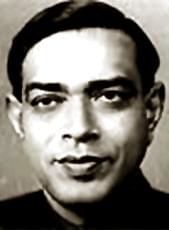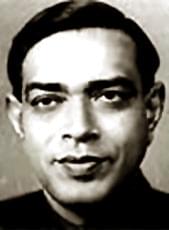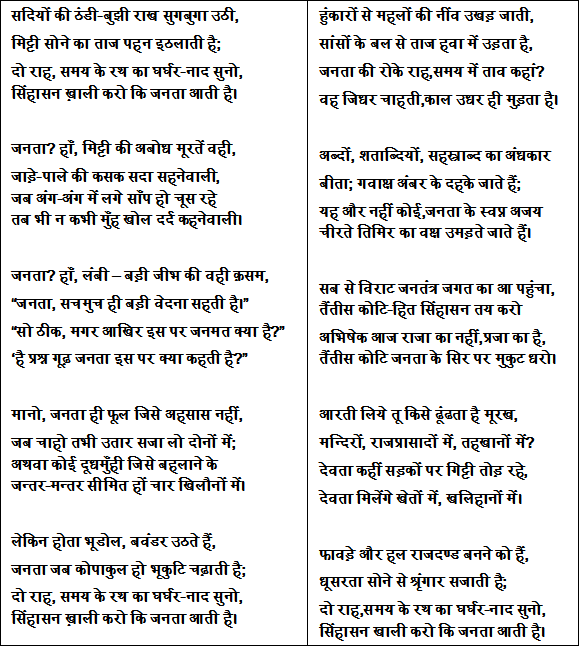Culture
Dinkar Too Important To Be Appropriated By One Section?
Surajit Dasgupta
May 28, 2015, 05:42 PM | Updated Feb 11, 2016, 09:44 AM IST
Save & read from anywhere!
Bookmark stories for easy access on any device or the Swarajya app.


It has all the right messages for the nation. The polity will be well advised not to slot him into a caste for identity politics or cherry-pick from his statements to imprison governance in dogma.
A Bengali in Bihar, I spoke simple Bengali, shorn of Sanskrit-origin words that I thought were meant only for editorials in Anandabazar Patrika until I migrated to Kolkata after school. My Hindi was horrible, with the written form as devoid of gender sensitivity as Bihari Hindi is (and I used to wonder how Biharis couldn’t get it right while speaking but could pull off written compositions perfectly). No elder ever congratulated me for my exam scorecard; for, amid all the scores in 90s, and a few 100s, that in Hindi hovered in the 50-60 range, creating an eyesore and attracting the attention of everybody who had the authority to scold me.
But even this hopeless student of Hindi got goosebumps all over when the teacher recited Ramdhari Singh ‘Dinkar’ (who was a Bihari, by the way), whose verses were replete with words of tatsam category, and — I learnt later — who was a puritanical linguist who despised the Urdu standard of Hindustani (which I am a great admirer of). As was the style of his generation, Dinkar’s lines were flawlessly rhythmic. During the recess, if friends did not put forth farmaish for Bollywood songs, the rhythms of which would be accentuated by beats of the teacher’s desk that was more sonorous than ours, I could break into a poem of Dinkar and my classmates could appreciate the rendition with foot-tapping.
Dinkar was much bigger than the meter of his poems, though. If you are in your teens, indifferent to your nation, his creations can turn you a nationalist in no time.In prose, with no knowledge of the evolution of the north Indian language in two branches, a student of Hindi would actually be convinced by the polemics of Dinkar that almost suggested it was criminal to use words of Arabic and Persian origin in Hindi (people who speak the language, by and large, couldn’t care less).
If I had not had this freaking hobby of linguistics that led me to historical studies of Indian languages, I would never have known — like most Hindi speakers don’t — that the Hindi we speak today is closer to Amir Khusro’s Hindavi, and that the history of the language taught in our schools is all wrong: That it evolved out of Prakrit’s progression to Braj, Awadhi, Bhojpuri, Magahi etc and beyond. The Braj of Surdas actually did not proceed beyond Bharatendu Harishchandra, and Awadhi could never scale the dizzying heights of Tulsidas’s Ramcharitmanas in the modern era. And neither sounds like the language we speak in the northern regions of the nation today. Today you need a teacher to understand Surdas and Tulsidas; you do not need one to understand Khusro. But Dinkar would have none of it.
Neither would the teachers of the Hindi language in Indian schools and universities. And to a school-going kid, what the teacher says is gospel.
But there is one aspect where ‘Urdu’ fails and ‘Hindi’ scores high. In the tradition of this language with two standards (three — if you were to consider Hyderabad’s Dakkani as a form of Hindi), there have been two poets who stood apart for overt political content in their poetry: Dinkar and Allama Muhammad Iqbal. Perhaps it is a wont of political litterateurs that they also suffer from a little communal bias. Dinkar’s was limited to linguistic puritanism. Iqbal suffered from it conspicuously, pushing Islamism through his verses. What the Muslim poet could never achieve was being able to provoke his reader to hit the street for activism, which Dinkar could — most notably against Indira Gandhi’s invocation of Emergency.
Taraana-e-Hind, better identified as “Saare Jahaan Se Achchha”, makes you feel good about the Indic civilisation. Tasveer-e-Dard fills you with helplessness when, snubbed at a roundtable for speaking out of turn by British officers, Iqbal writes
-Yeh dastūr-e-zabāNbandī hai kaisā terī mehfil meN?
YahāN to bāt karne ko tarastī hai zabāN merī!
[What a convention of silent audience have you put in place! (You provoke, but) I am not supposed to put in a word.]
Nobody knows how many Indians rebelled against the Empire on reading that, but ask a Lohiaite, an RSS swayamsevak who was imprisoned in the period 1975-77 or a lesser Kumar Vishwas of the Aam Aadmi Party. They took on the establishments of Indira Gandhi, Rajiv Gandhi and Manmohan Singh mouthing these words of Dinkar:
Sinhāsan khālī karo ki jantā ātī hai!
Don’t wonder why a Puritan Dinkar uses “khālī” and not “rikt” (while compensating for the meter elsewhere in the line) when he was of the view that foreign-origin words made Hindi impure. Instead, marvel at the imagery of the state of affairs of the government’s making he presents like a communist — while not being unmindful of the rules of classical poetry unlike communist ‘poets’. The original appears as a screenshot; here is my translation of the most riveting part, the second stanza:

Plebeians? Yes, the stupid people of clay,
Bearing with the vagaries of nature, they;
Even when you squeeze everything out of them,
Wouldn’t share their pain, would never have a say.
Farce of democracy, the fourth stanza:
Shornof any feeling, we are that flower,
When plucked or when adorningdifferent soul mates;
Like a suckling baby, easily cajoled,
For us, they tell us, work the four estates.
Revolution, the sixth stanza:
Our roars can but shake edifices of castles,
We merely exhale and crowns are blown away;
To block our passage is beyond the time’s means.
It’s we who tell the time what is its way.
The other stanzas are no less motivational; let’s leave their appreciation to connoisseurs of Hindi. To demonstrate that this was not a one-off expression of gusto, I turn to a gem where Dinkar narrates an episode of the Ramayana, which the Atal Bihari Vajpayee government and its supporters used to argue the case of “negotiating from a position of strength” after Pokhran II:
Kshamā shobhtī us bhujang ko jiske pās garal ho
Usko kyā jo dant-hīn, vish-hīn, vinīt, saral ho?
[A snake with venom inspires awe; a toothless, non-venomous, placid one doesn’t.]
If you didn’t get it, compare the years India spent trying to persuade the First World to adopt nuclear disarmament to Lord Rama pleading with the ocean to give him a passage to Lanka:
tīn divas tak panth māngte raghupati sindhu kināre,
baithe padhte rahe chhand anunay ke pyāre-pyāre.
uttar meN jab ek nād bhī uthā nahīN sāgar se,
uthī adhīr dhadhak paurush kī āg rām ke shar se.
Those who relate to the Mahabharata better may consider:
kshamā, dayā, tap, tyāg, manobal sab kā liyā sahārā;
par nar-vyāghra suyodhan tum se kaho, kahāN kab hārā?
kshamāshīl ho ripu-samaksh tum hue vinat jitnā hi,
dushT kauravoN ne tumko kāyar samjhā utnā hī.
These lines are also used by the right wing to goad the Government of India for action against terror-sponsoring, cross-border firing Pakistan. The long and short of it, Dinkar as a metaphor never loses relevance in politics.
But can the jingoism generated from Dinkar’s verses take the BJP to victory in Bihar? When the 50th anniversary of the nationalist poet’s creations Sanskriti Ke Chaar Adhyay and Parshuram Ki Prateeksha was celebrated on 22 May, the urbane Times of India got one half of the message right, leftist Hindu got the other half. Given that both the media houses purportedly share the value of anti-casteism, one wonders whether the commemoration pampered Bhumihars (according to TOI) or Brahmins (according to The Hindu), with the latter pointing out that the ceremony was followed by a Goswami Sammelan. Funnily, the quasi communist paper had the gall to name the attendants — Sushil Kumar Modi, Mangal Pandey and Nand Kishore Yadav — no way an all-Brahmin cast(e).
Having associated himself with Rajendra Prasad, Anugrah Narayan Sinha, Srikrishna Sinha, Rambriksh Benipuri and Braj Kishore Prasad at different points of time, Dinkar was hardly fixated with his Bhumihar identity. An admirer of Iqbal, Rabindranath Tagore, John Keats and John Milton can’t be. Neither was that the message from the prime minister on the occasion — the urbane newspaper, often accused of frivolity, must observe. In his speech from Vigyan Bhavan, Narendra Modi cautioned other politicians and the people at large against slotting the Rashtrakavi into a caste mould.
So, let’s leave the jokes by ‘aliens’ and get the cause right. The never-ending language dispute in India does have a point of resolution in Dinkar’s creations. Forget what form of Hindi he pushed. Study the kind of Hindi he used. The repletion with Sanskrit-origin words makes it intelligible for speakers of all languages that descended from Sanskrit — from Bengali to Telugu, from Gujarati to Kannada, from Assamese to Malayalam (Sanskritised Tamil?)… And if that makes the parlance gobbledygook for north Indians, you have compromises like “khālī” for “rikt” that Dinkar was not loath to!
Importantly, Dinkar also advocated the use of one’s mother-tongue big-time, and he was very popular among Indians who did not speak Hindi.
Over and above enabling Indians to communicate with a larger audience across India, Dinkar gives a sane counsel to politicians. His political affiliation ranged from revolutionary freedom struggle to Gandhism to opining that non-violence couldn’t be unexceptionable. Those in the business of governance must thus note that ideology cannot be dogma.
To the masses, Dinkar’s veer rasa offers a horripilation of nationalism. Only a comatose patient will not get animated enough for action on reading his compositions. From the French Revolution to America’s response to 9/11, nobody built a nation without that emotion.
References:
1. Ramdhari Singh Dinkar’s Rashtrabhasha Aur Rashtriya Ekta
2. Ramdhari Singh Dinkar’s Chintan Ke Aayam
3. Vijendra Narayan Singh’s Bharatiya Sahitya Ke Nirmata: Ramdhari Singh ‘Dinkar’





